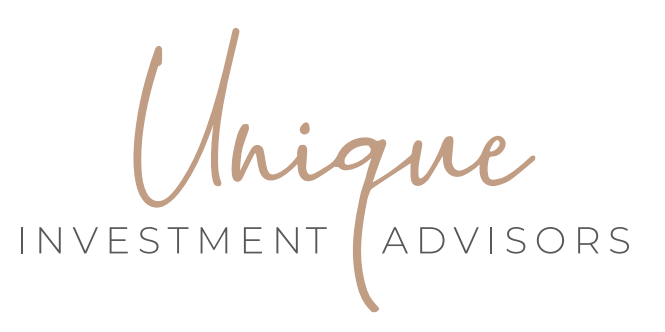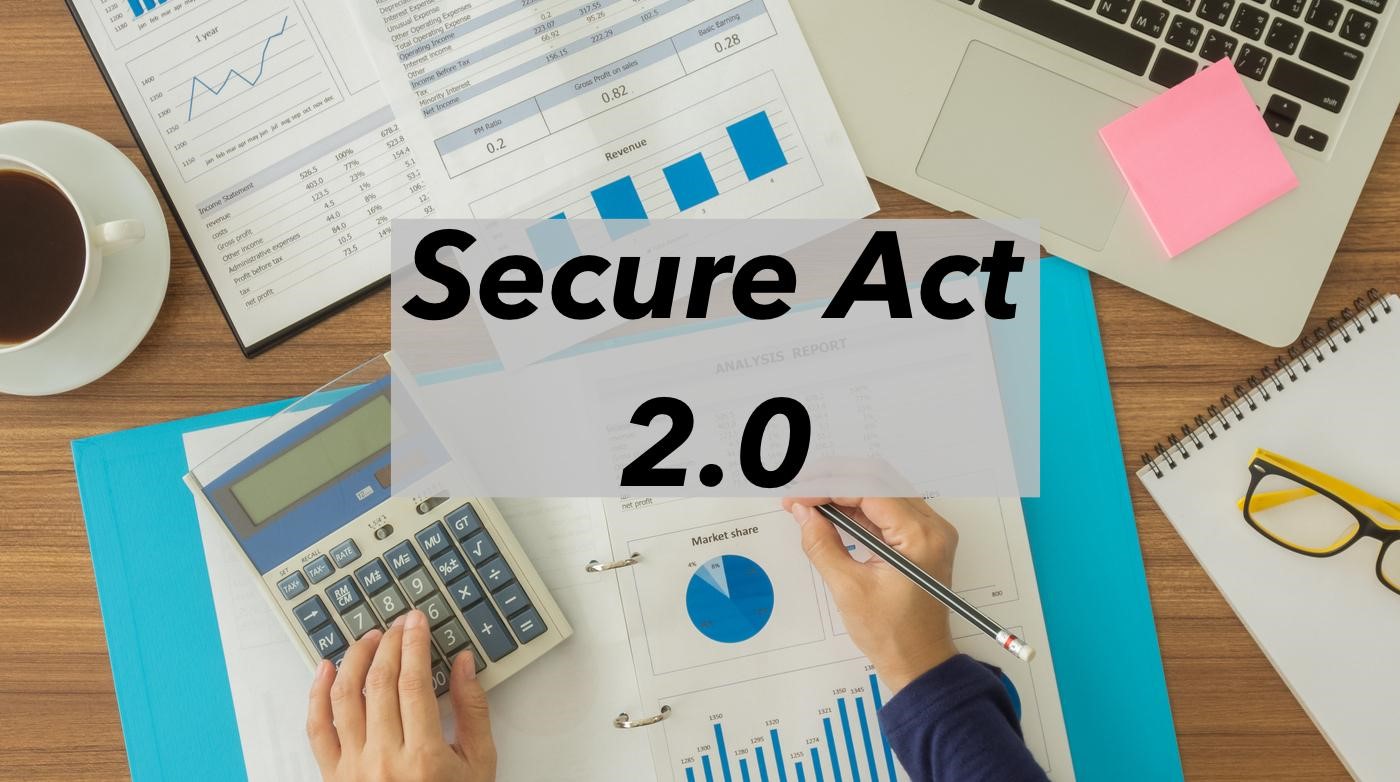Demystifying the Secure Act 2.0: A New Era for Retirement Plans
Retirement planning is a crucial aspect of ensuring financial security in the golden years. In 2023, the Secure Act 2.0 emerged as a landmark legislation aimed at enhancing retirement plans and benefits for Americans. Building upon the foundation laid by its predecessor, the Secure Act, this new iteration introduces several key changes to qualified plans, including 401(k), IRA, Roth IRA, and 403(b) accounts. In the following, we will delve into the qualified plan changes brought about by the Secure Act 2.0, exploring their implications for individuals seeking to secure a prosperous retirement.
1. Qualified Plan Changes:
The Secure Act 2.0 introduces notable changes to qualified retirement plans, which include 401(k) plans, individual retirement accounts (IRAs), Roth IRAs, and 403(b)s. These changes aim to expand access, boost savings, and provide greater flexibility for retirement planning.
a. 401(k) Plans:
One significant modification pertains to 401(k) plans. Previously, the Secure Act increased access to these plans by allowing part-time employees to become eligible after completing certain requirements. Secure Act 2.0 builds upon this by further reducing eligibility requirements, allowing more employees to participate in employer-sponsored retirement plans. This expansion benefits those who may have previously been excluded from such plans due to part-time or seasonal employment.
Additionally, the Secure Act 2.0 enhances the portability of lifetime income investments within 401(k) plans. This provision allows plan participants to transfer their lifetime income investments to another employer-sponsored retirement plan or an IRA, providing greater flexibility and control over their retirement assets.
b. Individual Retirement Accounts (IRAs):
The Secure Act 2.0 introduces changes that impact traditional IRAs, including the removal of age limitations for contributions. Previously, individuals were barred from contributing to traditional IRAs once they reached the age of 70½. However, under the new legislation, individuals can continue making contributions to their traditional IRAs as long as they have earned income, promoting extended retirement savings.
c. Roth IRAs:
The Secure Act 2.0 expands the eligibility for Roth IRAs, which offer tax-free growth and tax-free withdrawals in retirement. The legislation allows individuals to convert their traditional IRAs to Roth IRAs at any age, removing the previous age restriction. This change offers individuals greater flexibility in managing their retirement savings and potentially optimizing their tax strategies.
d. 403(b) Plans:
The Secure Act 2.0 also impacts 403(b) plans, which are retirement plans commonly available to employees of educational institutions, nonprofit organizations, and certain public sector employers. The legislation now allows employers to provide a “matching” contribution to their employees’ 403(b) plans, similar to the matching contributions provided by employers in 401(k) plans. This change enhances retirement savings opportunities for employees in the education and nonprofit sectors, aligning their retirement benefits with those in other industries.
2. Lifetime Income Options:
Another significant aspect of the Secure Act 2.0 revolves around lifetime income options within retirement plans. The legislation promotes the inclusion of annuities and other lifetime income solutions in retirement plans, such as 401(k) plans and IRAs. These income options provide retirees with a predictable stream of income throughout their retirement years, protecting against the risk of outliving their savings.
By encouraging the adoption of lifetime income options, the Secure Act 2.0 addresses the critical issue of longevity risk. Individuals can now leverage these solutions to secure a stable income and plan for a more financially secure retirement.
3. RMD Changes:
The Secure Act 2.0 introduces changes to Required Minimum Distributions (RMDs), which are the minimum amounts individuals must withdraw from their retirement accounts annually after reaching a certain age. Previously, the RMD age was 70½, but under the new legislation, it has been increased to 72. This change allows individuals to delay their RMDs, giving their retirement savings more time to grow tax-deferred.
Furthermore, the Secure Act 2.0 eliminates the so-called “stretch IRA” provision for most non-spouse beneficiaries. Under the previous rules, non-spouse beneficiaries could stretch out the distributions from inherited IRAs over their lifetimes, providing significant tax advantages. However, with the Secure Act 2.0, most non-spouse beneficiaries are now required to withdraw the entire balance within a ten-year period. This change aims to accelerate the distribution of inherited retirement assets, resulting in increased tax revenue for the government.
4. Small Business Retirement Plans:
Secure Act 2.0 places a strong emphasis on expanding retirement plan access for employees of small businesses. It introduces multiple employer plans (MEPs), allowing unrelated small businesses to pool resources and offer retirement benefits to their employees. This provision enables small businesses to access the benefits of scale and reduce administrative burdens, making it easier for them to provide retirement plans to their workforce.
Furthermore, the legislation introduces tax credits and incentives for small businesses that adopt automatic enrollment features in their retirement plans. Automatic enrollment encourages employees to participate in retirement plans by enrolling them automatically, unless they choose to opt-out. By incentivizing small businesses to implement automatic enrollment, Secure Act 2.0 aims to boost retirement savings rates among employees.
5. Access to Retirement Plans for Part-Time Employees:
One of the notable provisions of the Secure Act 2.0 is the expansion of retirement plan access for part-time employees. Previously, part-time employees had to work a certain number of hours to become eligible for retirement plans. However, the new legislation reduces the required hours, allowing more part-time employees to participate in employer-sponsored retirement plans. This change acknowledges the evolving nature of work and ensures that a broader range of individuals can save for retirement, regardless of their employment status.
6. Student Loans:
In addition to its impact on retirement plans, the Secure Act 2.0 also includes provisions related to student loans that can significantly influence individuals’ financial journeys. The legislation allows employers to make tax-free contributions of up to $5,250 per year towards their employees’ student loans. This provision offers a valuable opportunity for individuals burdened by student loan debt to receive assistance from their employers in the form of contributions, helping them to accelerate their debt repayment and achieve financial freedom more quickly.
By addressing the issue of student loan debt within the framework of retirement plans, the Secure Act 2.0 recognizes the interconnectedness of financial well-being and retirement readiness. It acknowledges that the burden of student loans can hinder individuals’ ability to save for retirement and seeks to alleviate this strain by introducing this employer contribution provision. This provision not only supports employees in their journey towards debt repayment but also enables them to focus on building a more secure financial future, including saving for retirement.
It’s important for individuals with student loans to explore this aspect of the Secure Act 2.0 and assess how it can benefit their unique circumstances. By taking advantage of employer contributions towards student loans, individuals can make significant strides in managing their debt while simultaneously working towards a more stable retirement.
Ultimately, the Secure Act 2.0’s inclusion of provisions related to student loans demonstrates a holistic approach to financial well-being, recognizing the interconnected nature of different financial aspects in individuals’ lives. By offering opportunities to alleviate student loan debt while enhancing retirement savings options, the legislation aims to empower individuals to achieve both short-term and long-term financial goals, leading to a more secure and prosperous future.
Conclusion:
The Secure Act 2.0 represents a significant step forward in transforming retirement plans and benefits in the United States. With its qualified plan changes, such as expanding access to 401(k) plans, enhancing traditional and Roth IRA eligibility, promoting lifetime income options, and modifying RMD rules, the legislation seeks to address key challenges in retirement planning.
Furthermore, the Secure Act 2.0 prioritizes small businesses and part-time employees, providing them with opportunities to offer retirement benefits and save for their future. By incentivizing employers, expanding access, and promoting automatic enrollment, the legislation aims to create a more inclusive and robust retirement system.
As an individual planning for retirement, it is crucial to stay informed about the changes brought by the Secure Act 2.0 and consult with a investment advisor fiduciary to understand how these provisions may affect your specific retirement goals and strategies. With careful planning and leveraging the opportunities presented by the Secure Act 2.0, you can navigate the ever-changing landscape of retirement planning and work towards a financially secure and fulfilling retirement.
Author




















